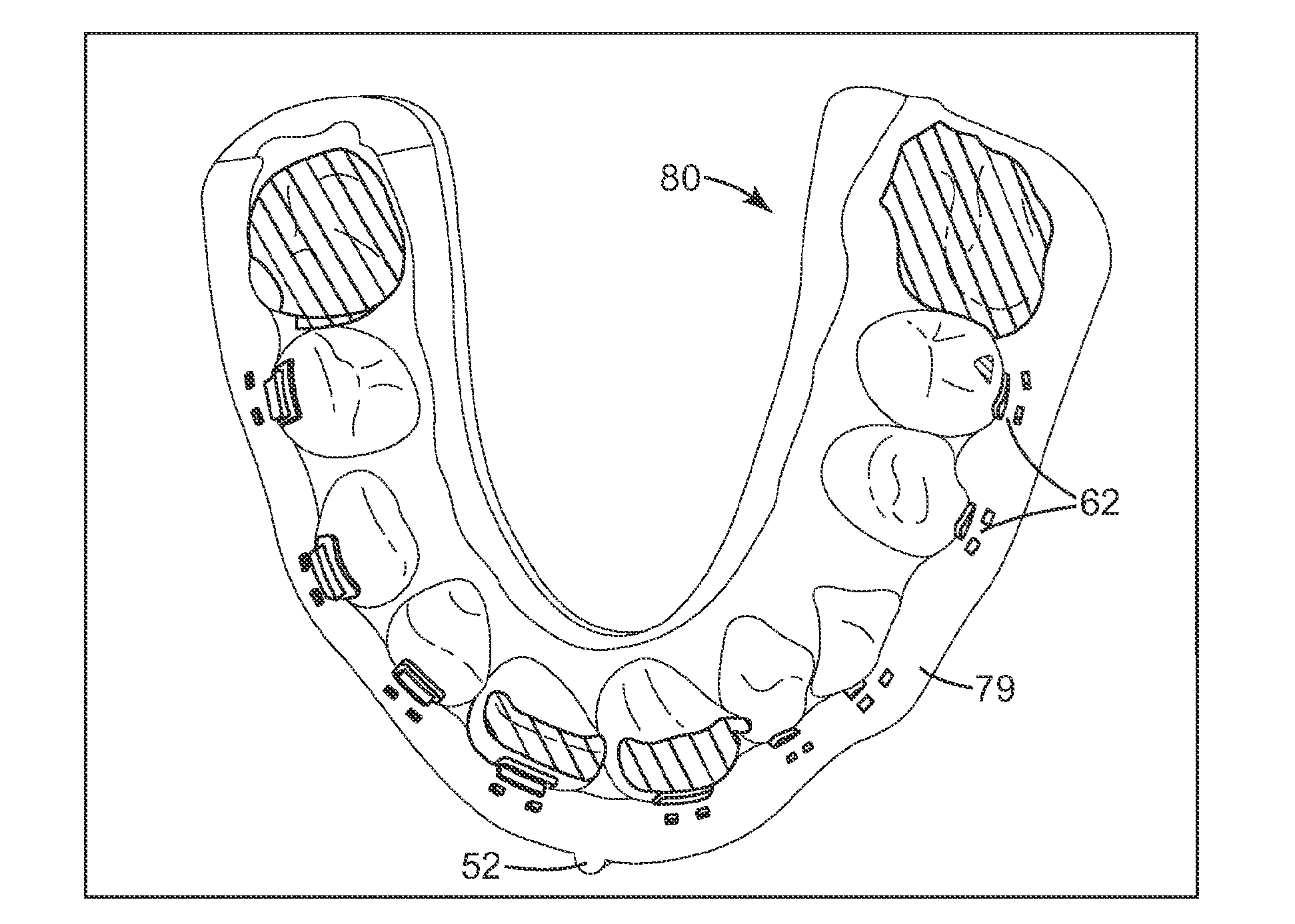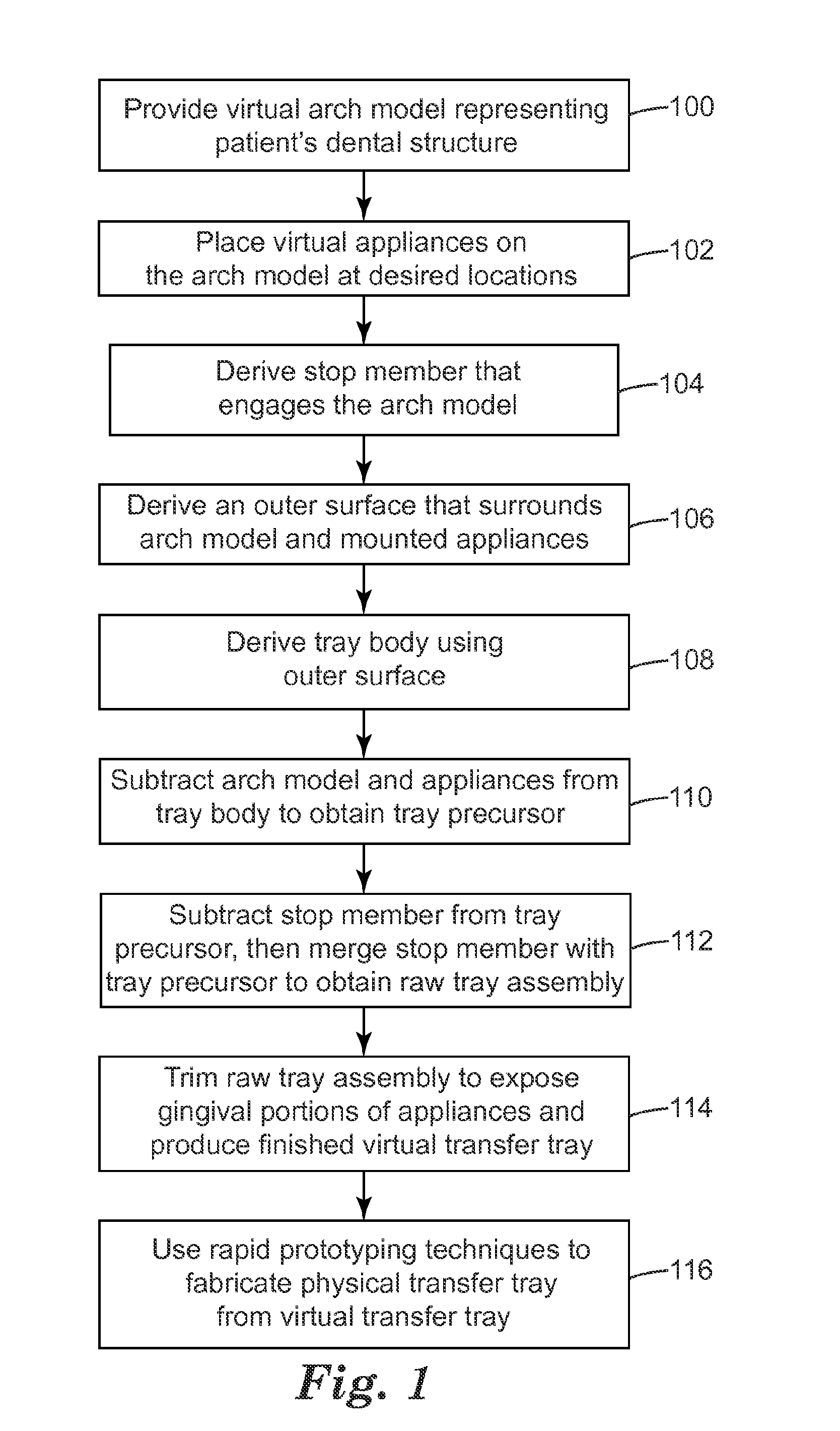Rapid prototyped transfer tray for orthodontic appliances
a technology for orthodontic appliances and transfer trays, applied in the field of transfer trays, can solve the problems of requiring the intervention of an operator in the conventional process of thermoforming or casting the transfer tray, incurring additional time or materials costs, and laborious and time-consuming preparation of the transfer trays for the treating professional or lab technician, so as to facilitate the engagement and disengagement of the transfer tray from the appliance, and reduce the travel distance of the transfer tray. , the effect of reducing the smea
- Summary
- Abstract
- Description
- Claims
- Application Information
AI Technical Summary
Benefits of technology
Problems solved by technology
Method used
Image
Examples
example
[0082]An exemplary transfer tray was prepared using a scanned 3D virtual model of a patient as well as the 3D solid models of an upper 5×5 set of VICTORY SERIES brand orthodontic brackets (3M Unitek, Monrovia, Calif.) provided in STL format. A virtual model of the patient's arch was obtained using a digital scan of an orthodontic stone impression of a patient's upper dental arch. THREE-MATIC software (Materialise Group in Leuven, Belgium) was then used to construct a virtual model of the transfer tray. The 5×5 set of upper orthodontic brackets was virtually bonded to the model. A three-section integral stop member was derived to matingly engage the occlusal contours of the left first molar, right first molar and the left and right central teeth. A single guidance line was manually traced along the facial surfaces of the virtual brackets by an operator, and this guidance line was subsequently used to derive a smoothed outer surface that was offset by 3.5 millimeters in the labial dir...
PUM
| Property | Measurement | Unit |
|---|---|---|
| Structure | aaaaa | aaaaa |
| Size | aaaaa | aaaaa |
| Flexibility | aaaaa | aaaaa |
Abstract
Description
Claims
Application Information
 Login to View More
Login to View More - R&D
- Intellectual Property
- Life Sciences
- Materials
- Tech Scout
- Unparalleled Data Quality
- Higher Quality Content
- 60% Fewer Hallucinations
Browse by: Latest US Patents, China's latest patents, Technical Efficacy Thesaurus, Application Domain, Technology Topic, Popular Technical Reports.
© 2025 PatSnap. All rights reserved.Legal|Privacy policy|Modern Slavery Act Transparency Statement|Sitemap|About US| Contact US: help@patsnap.com



